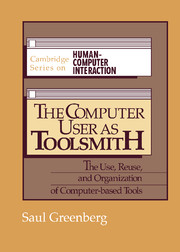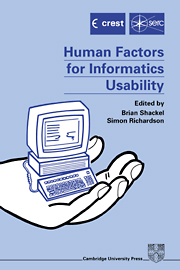The Computer User as Toolsmith
Computing environments that furnish a large set of tools (such as editors, mail programs and language processors) are difficult to use, primarily because there is no means of organizing the tools so that they are at hand when needed. Because of the dearth of knowledge of how users behave when issuing commands to general purpose computer systems, user support facilities are ad-hoc designs that do not support natural work habits. The Computer User as Toolsmith, first published in 1993, describes several empirical studies from which the author has developed a computer version of a handyman's workbench that would help users with their online activities. For the practitioner and interface designer, the guidelines and principles offered here are directly applicable to the rational design of new systems and the modernization of old ones. For the researcher and graduate student, the book offers a wealth of analysis and interpretation of data, as well as a survey of research techniques.
- A handyman's workbench for computer scientists
- Useful for the practitioner and interface designer, as well as for the researcher and graduate student
Reviews & endorsements
"...thoughtfully and carefully written. It is well referenced, with over 100 citations. The author describes in clear and precise detail how he took his initial premises about tools and their reuse, and developed a research and analysis program to test them." G.R. Mayforth, Computing Reviews
Product details
January 1993Hardback
9780521404303
204 pages
262 × 181 × 20 mm
0.67kg
45 b/w illus. 18 tables
Available
Table of Contents
- 1. Introduction
- 2. Studying Unix
- 3. Using commands in Unix
- 4. Techniques for reusing activities
- 5. Recurrent systems
- 6. Reuse opportunities in Unix Csh - potential and actual
- 7. Principles, corroboration and justification
- 8. Organizing activities through workspaces
- 9. A workspace system: description and issues
- 10. Conclusion
- References.






